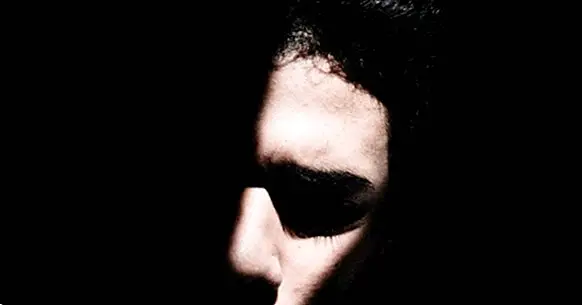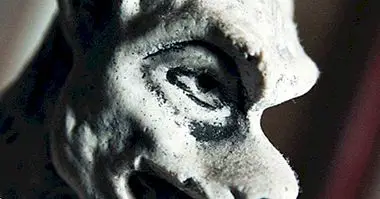Psychogenic death: what is it, what causes it, and types
The power of the mind over our body is very high : the first is capable of affecting the functioning of the organism. Our heart rate, respiratory rate, blood pressure, level of muscle tension, dilation or contraction of the pupils, sweating, blood passage, intestinal transit, and many other similar processes are greatly affected by our mental contents. and emotional.
Cases are known of people who lose memory of traumatic events due to their mind's attempt to block certain memories, or of others who have suffered from medical illnesses, convulsions, paralysis or speech problems due to causes linked to mental suffering.
However, this relationship can reach even beyond what most people usually think: our own mind can end up causing us death. This type of death is known as psychogenic death , and it is about her that we are going to talk about next.
- Related article: "What is brain death? Is it irreversible?"
What is psychogenic death?
Probably on occasion we have heard of someone who is said to have died of grief shortly after a very close person died, or who has been left to die because he did not want to live. Although in some cases it is an interpretation of what has happened to the deceased, this type of expression contains a truth that must be taken into account: it is possible to die from mental and emotional causes.
The death or illness is the psychogenic death which occurs in the absence of a pathology or physical medical condition that explains the death, and whose main cause the influence of the psyche on the functioning of the body and the energy needed to live .
This type of death is usually linked to the extreme experience of emotions such as sadness, fear or shame usually linked to the suffering of some type of traumatic experience with great affectation for the person.
In many cases the subject loses the motivation to live and in fact after a while you may end up dying. It is not however a phenomenon derived from depression or other psychiatric conditions, but simply and despite not being intentional and intended (it would not be a form of suicide), the subject surrenders to death by losing will to live
- You may be interested: "Types of depression: its symptoms and characteristics"
What causes it?
Traditionally, it has been considered that psychogenic death is produced by some kind of cardiac alteration generated by the experience of a trauma , such as a myocardial infarction or a stroke triggered by emotional stress. This is true in many cases.
However, it has also been discovered that many of these deaths, especially those that are not linked to fear or shame but to sadness, may have a different cause: the cessation of motivation to live.
In physiological terms, the existence of an alteration at the level of anterior cingulate , one of the main areas that govern motivation at the behavioral level and allow the person to direct their action towards concrete goals, something that includes the orientation towards survival. The experience of certain traumatic events can cause this area to stop working properly, which leads to a progressive loss of motivation and energy that can lead to death.
5 stages of abandonment
The so-called psychogenic death does not occur suddenly and suddenly (except in cases where emotion generates a physiological response such as a heart attack), but it is usually possible to observe how these deaths occur along a process that can be relatively fast, being able to last from a few days to months or years. In that process a series of stages or phases can be observed that little by little they will be bringing the subject closer to its end.
1. Phase of social withdrawal
During this first phase the person begins to withdraw, isolate and move away from their environment. There is a tendency towards a certain egocentrism and separation from the world, as well as a progressive passivity and emotional indifference.
Usually this first phase usually happens after some kind of emotional trauma , and some authors interpret it as an attempt to move away to rebuild. It is in case of not getting this reconstruction when the process is followed.
2. Phase of apathy
A second phase, more dangerous than the first, occurs when the subject begins to notice a total lack of energy together with a sensation of strong disconnection with reality. At this moment, the subject can lose the instinct of preservation and stop struggling to develop and continue living.
3. Phase of abulia
Not only the energy has gone, but in this third phase so have the motivation and the ability to make decisions. There is a kind of mental numbness and a lack of mental and conscious content.
It is usual an extreme withdrawal that even can generate the forgetting of basic needs how to eat, but in spite of the fact that the subject does not have the capacity to self-motivate, it is still possible to motivate him from the outside (now, in the absence of such external motivation, the subject will return to the situation of intense apathy and abandonment).
4. Psychic akinesia
This fourth phase is one of the most serious, increasing the previous symptomatology in such a way that although there is awareness there is a total lack of sensitivity. Rather, even though they may feel they are unable to react to the stimuli. Even if they feel pain or discomfort, people in this state will not react nor will they avoid harmful stimulation.
5. Psychogenic death
The last phase of the process is the one that leads to the real death of the person, after a stage in which no type of stimulation will make the subject react . There is no motivation to live and the subject is let go, which will eventually lead to death.
Types of psychogenic death
Although psychogenic death is usually the product of the experience of a traumatic event or the intense experimentation of emotions such as suffering or shame, the truth is that we can find different types of psychogenic death. Next we will see some variants of this type of death depending on what generates the lack of desire to live or the auto-suggestion that they will die soon.
Among them we can find death by location, born of suggestion and conditioning to suppose that death itself will arrive when a specific condition is met. The high level of emotional tension that this entails will end up causing the psyche of the subject to generate a real death. There are numerous historical records of characters who have died in this way.
We also find voodoo deaths among the psychogenic deaths, which also arise from the belief and suggestion on the part of the sufferer that being spellbound or having broken a sacred taboo will cause death. This is one of the most common causes of people who believe in voodoo end up dying really after being cursed , or what causes that people who play with the ouija run the same fate (reasons why it is said that such acts only affect if the person believes in them).
A third type of psychogenic death is found in what is known as hospitalism . Hospitalism is a concept that refers to the separation of a child and its mother or attachment figure for a prolonged period of time. This separation generates a great anxiety and anguish to the child, which can end up losing appetite and end up dying. This is the case, for example, of many children abandoned or separated at an early age from their parents, who end up dying without a clear organic cause due to the deprivation of affection.
An avoidable type of death
Psychogenic death is not an inevitable process, but rather it is possible to reverse the process . Work must first be done on the increase of the person's activity, as well as on their perception of control over their own life and on the restructuring of maladaptive and dysfunctional beliefs, whatever the case may be among those exposed.
The traumatic situation that the beginning of the process could have generated must be addressed, as well as stimulating commitment to oneself and restoring healthy habits to gradually add a work on socialization and community participation. It may also be relevant to help find vital goals for the subject , reasons to live and to which to orientate.
Likewise, psychopharmacology can help promote an increase in the desire to live, through the use of stimulants and substances such as antidepressants to promote activity and reduce passivity.
Bibliographic references:
- Beebe Tarantelli, C. (2008). Life within death: towards a metapsychology of catastrophic psychic trauma. The International Journal of Psychoanalysis, 84 (4) .: 915-928
- Institute of Spain Royal National Academy of Medicine (1974). The sense of pain. Speech for the public reception of the elected Academician Hon. Mr. Dr. D. Pedro Piulachs Oliva read on June 4, 1974 and answered by the Academic numerary Hon. Mr. Dr. D. Rafael Vara López. Madrid Spain.
- Leach, J. (2018) Give-up-itis revisited. Neuropathology of extremis, Medical Hypotheses.




















